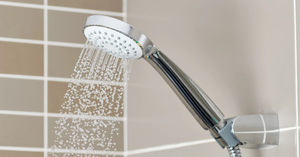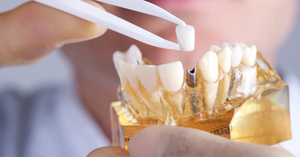When we think of chronic periodontitis, we often associate it with adults. However, children can also develop this gum disease, though it is relatively rare. Chronic periodontitis in children can have serious consequences if left untreated, including damage to gums, teeth, and even the jawbone.
What Is Chronic Periodontitis?
Chronic periodontitis is a long-term inflammatory gum disease caused by the buildup of plaque and bacteria. It damages the gum tissue and can lead to:
• Gum recession.
• Formation of periodontal pockets (spaces between teeth and gums).
• Loss of the supporting bone around teeth.
Although it is more common in adults, children with poor oral hygiene or certain underlying conditions are also at risk.
What Causes Chronic Periodontitis in Children?
Several factors contribute to the development of chronic periodontitis in children, including:
1. Poor Oral Hygiene
• Inadequate brushing and flossing allow plaque and tartar to build up, leading to inflammation of the gums.
2. Genetic Predisposition
• Some children may have a family history of gum disease, increasing their likelihood of developing it.
3. Underlying Health Conditions
• Systemic diseases like diabetes, immune disorders, or hormonal changes during puberty can make children more prone to chronic periodontitis.
4. Early-Onset Gingivitis
• If mild gum inflammation (gingivitis) is left untreated, it can progress to chronic periodontitis over time.
5. Smoking or Second-Hand Smoke Exposure
• Exposure to tobacco can weaken the immune response and contribute to gum disease.
Signs and Symptoms of Chronic Periodontitis in Children
Children with chronic periodontitis may experience the following symptoms:
1. Red, Swollen Gums
• Gums may look inflamed and feel tender to the touch.
2. Bleeding Gums
• Bleeding during brushing, flossing, or even eating can indicate gum disease.
3. Receding Gums
• The gums pull back, making teeth appear longer.
4. Bad Breath (Halitosis)
• Persistent bad breath even after brushing may be a sign of chronic periodontitis.
5. Loose Teeth
• Loss of bone support can cause teeth to feel wobbly or shift in position.
6. Pus Formation
• Severe cases may lead to the development of abscesses or pus-filled pockets in the gums.
How Is Chronic Periodontitis Diagnosed?
To confirm a diagnosis of chronic periodontitis, a dentist or periodontist will:
• Examine the Gums: Checking for redness, swelling, and bleeding.
• Measure Pocket Depths: Using a periodontal probe to assess the depth of the pockets between teeth and gums.
• X-Rays: To evaluate the amount of bone loss around the teeth.
• Review Medical History: Identifying underlying health conditions or risk factors.
Treatment Options for Chronic Periodontitis in Children
The treatment goal is to stop the progression of the disease, repair damage, and maintain healthy gums.
1. Professional Cleaning
• Scaling and Root Planing: A deep cleaning procedure to remove plaque and tartar from below the gum line and smooth the root surfaces.
• Regular dental cleanings are crucial to prevent further buildup.
2. Antibiotics
• Local or systemic antibiotics may be prescribed to control infection and reduce inflammation.
3. Oral Hygiene Education
• Teaching children proper brushing and flossing techniques to prevent plaque accumulation.
4. Surgery (Rare in Children)
• In advanced cases, surgical intervention may be required to reduce periodontal pockets or regenerate lost bone and gum tissue.
How to Prevent Chronic Periodontitis in Children
Prevention is key to avoiding gum disease in children. Here’s how you can help:
1. Maintain a Regular Oral Hygiene Routine
• Brush twice a day with fluoride toothpaste.
• Introduce flossing early to remove plaque between teeth.
2. Schedule Regular Dental Checkups
• Dental visits every six months help catch early signs of gum disease and ensure proper cleaning.
3. Encourage a Balanced Diet
• Limit sugary snacks and drinks, as they contribute to plaque buildup.
• Provide nutrient-rich foods like fruits, vegetables, and dairy to strengthen teeth and gums.
4. Avoid Tobacco Exposure
• Keep your child away from smoking or second-hand smoke, as it increases the risk of gum disease.
5. Monitor Medical Conditions
• If your child has conditions like diabetes or an immune disorder, ensure they’re managed effectively to reduce the risk of gum disease.
FAQs About Chronic Periodontitis in Children
Q: Is chronic periodontitis reversible in children?
A: While damage to bone and gum tissue may not be fully reversible, early intervention can stop the progression and preserve oral health.
Q: Can baby teeth be affected by chronic periodontitis?
A: Yes, baby teeth can be affected. Treating gum disease early prevents complications for permanent teeth.
Q: Is chronic periodontitis painful?
A: It may not cause pain initially, but as it progresses, children might experience discomfort, especially when eating or brushing.
Final Note for Parents
Chronic periodontitis in children is rare but not impossible. With early diagnosis, proper treatment, and preventive care, your child can enjoy healthy gums and teeth for years to come. Keep an eye on their oral hygiene habits, schedule regular dental checkups, and address any gum concerns promptly.
Remember, a healthy smile starts with healthy gums!








Be the first one to comment on this story.